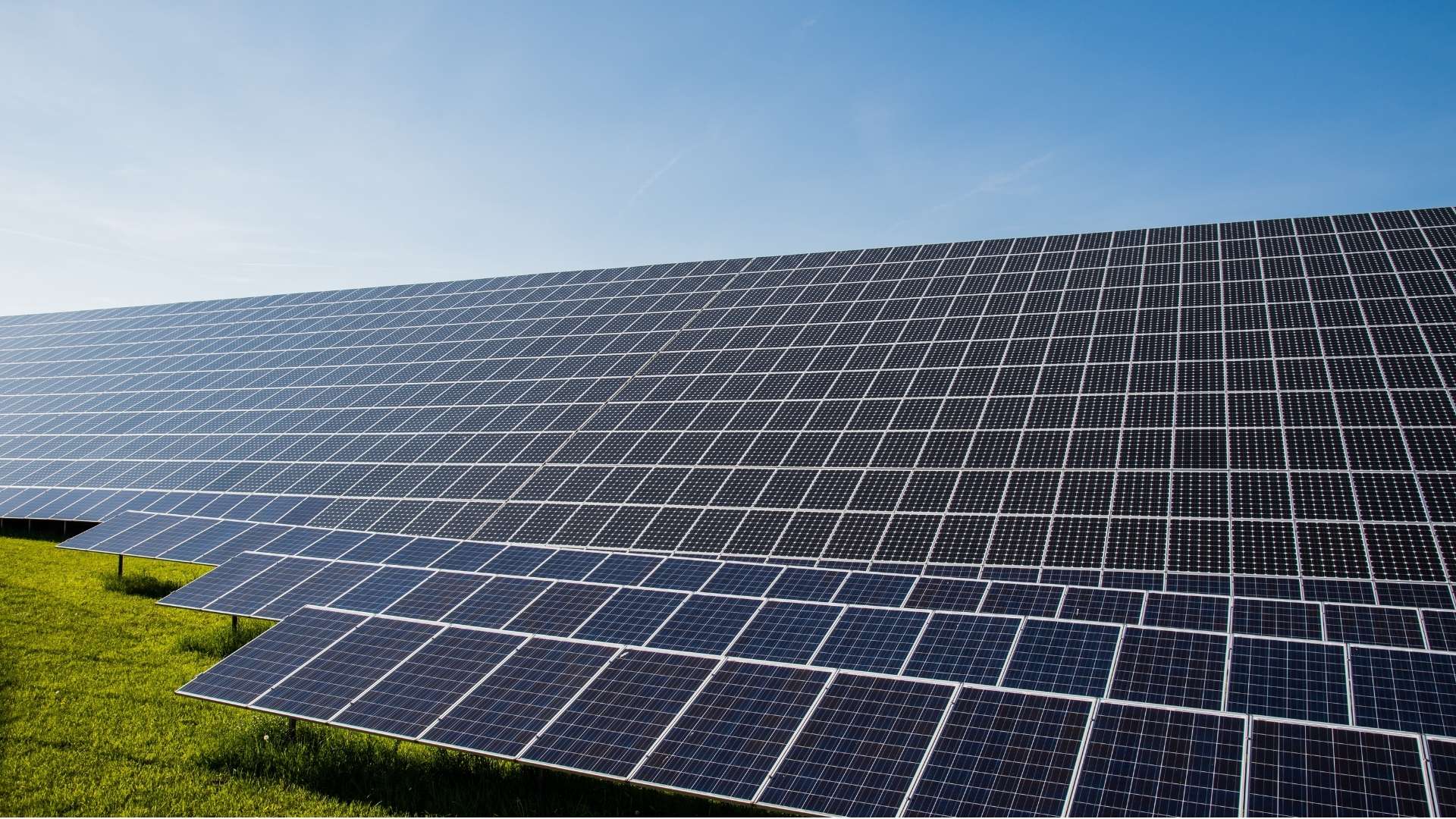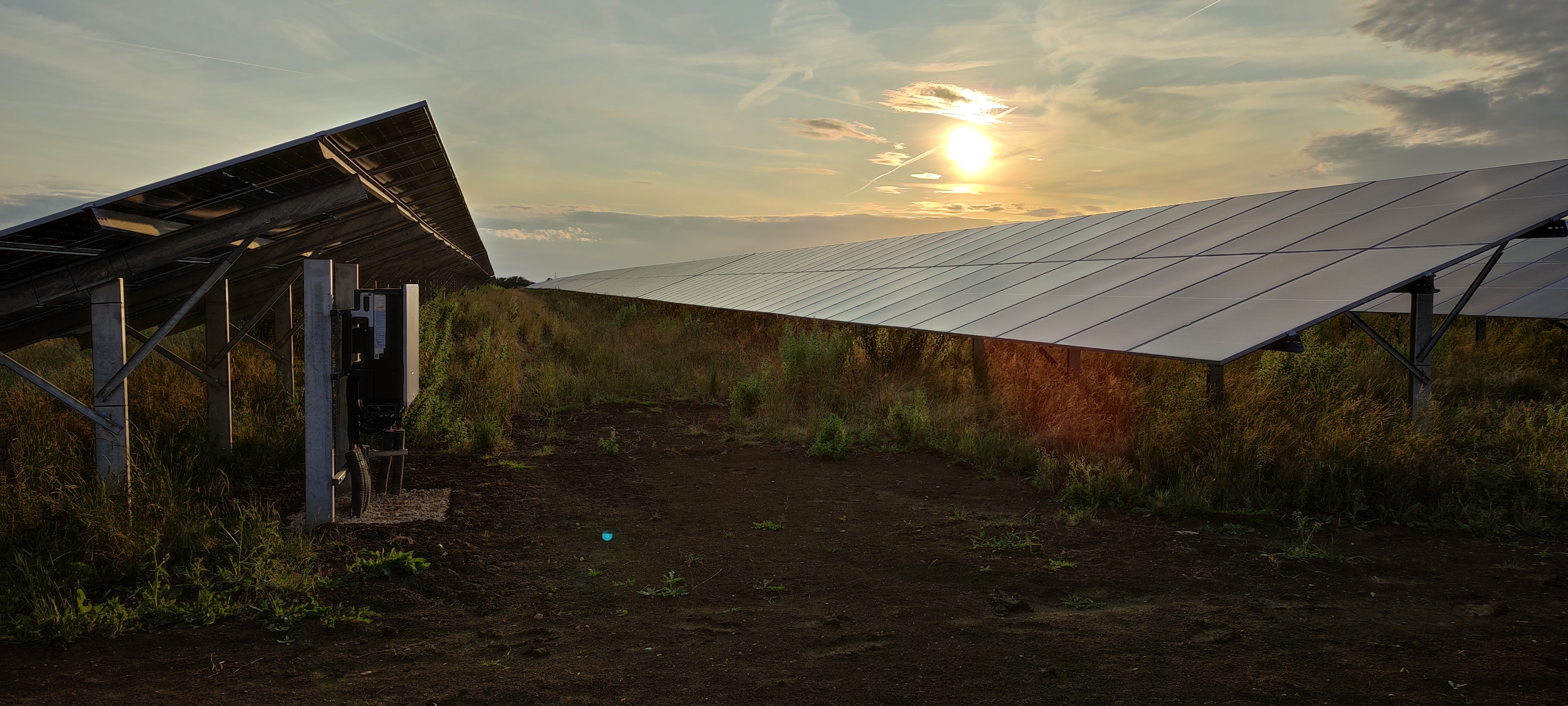Basking in the sun: nine solar policy essentials

As I write this article, sitting in a shady room on a scorching summer's day, solar power is supplying 25% of the UK's electricity.
The last few months have been packed full of further government action from the publication of the Climate Change Committee progress on reducing emissions report to the release of the Solar Roadmap, aimed at boosting the generation of solar power in the UK. In this packed policy landscape, here are nine things you should know.
1 - UK emissions back on track
In its reducing emissions report, the independent CCC found that the UK’s progress on tackling climate change had significantly improved in 2024, and with more action the UK can hit its legally binding climate targets. Importantly, the committee recognised that, “when market forces and consistent policies work together, rapid change is possible”. A notable highlight is that the total roll-out of offshore and onshore wind and solar capacity increased in 2024 by more than the increase seen in any of the previous six years.
2 - Contracts for Difference scheme (AR7)
Big news here is that the CfD has now been extended to 20 years from 15 for wind and solar. A very welcome development and one that you hope will be reflected in a lower cost of capital for these projects. Lower cost of capital means lower energy bills for the taxpayer. We all want that.
The registration window opened on 9 July. The scheme has been reformed primarily to support repowering of onshore and floating offshore wind projects. For solar, the reforms to improve scheme clarity, extend the target commissioning window from 3 to 12 months, provide an earlier appeals process and adjustments to delivery years are applicable.
3 - Solar deployment potential rising
The Solar Roadmap, published on 30 June, has deployment trajectories showing that, assuming implementation of planned connection reforms, and plentiful availability of skills, supply chain and finance, deployment could reach the upper end of the required 45 – 47GW by 2030, with 75GW by 2035.
The National Energy System Operator has identified that an additional 9-10GW of smaller-scale rooftop solar projects (who don’t need transmission or meaningful distribution connections) could be deployed before 2030, taking the possible total range to 54 – 57GW in 2030.
In a nod towards myth busting, Government analysis shows that 0.4% of total UK land would be required to deliver solar under these assumptions. It doesn’t feel that this is going to decimate the farming landscape and threaten food security. Feels more like it will provide a lifeline of rental income for farmers who are struggling to keep their operations profitable.
4 - Rooftop solar revolution planned
The Solar Roadmap includes actions to remove regulatory barriers, embed solar into the Warm Homes Plan and Future Homes Standards and ensure house valuation and EPCs recognise its benefits. A decision is due in the autumn on inclusion of solar in the Future Buildings Standard. There are also actions to increase green finance options for consumers, and a commitment from the National Wealth Fund to explore financing of solar projects or portfolios pursuing innovative business models, including those entering into PPAs with sub-investment grade counterparties.
5 - Support for supply chains
The Solar Roadmap includes actions to remove barriers to UK innovation, particularly in relation to the manufacture of balance of system components, batteries and innovative technologies. There are actions to create an online directory of solar manufacturing businesses and protect the innovation and IP for next generation products. However, I would have liked to have seen more on addressing bottlenecks on more prosaic components such as transformers and switchgear where I think we can put wind in the sails of British businesses and take more concrete steps to give ourselves a chance at installing the huge capacities we are trying to for CP2030.
6 - Battery storage essential
The Solar Roadmap highlights the need for network companies to appreciate that BESS, when co-located with solar can benefit rather than hinder the electricity system. Network companies and developers have been tasked with harmonising modelling methodologies to recognise this benefit.
7 - Floating solar offers deployment potential
FPV – mounting panels in lakes, reservoirs and ponds – is a growth area. Government has committed to considering the inclusion of FPV in Contracts for Difference and make planning levers more favourable. Floating solar has been around for a long time. Water Utilities have dabbled with this on their extensive reservoir networks but is difficult and costly. This feels like a distraction from the real aim of the game – to deploy solar at speed and scale.
8 - Single market retained, with reforms
This conclusion of the multi-year Review of Electricity Market Arrangements was shared on 10 July. Zonal is out and Reformed National Pricing is in. We don’t quite know what Reformed National Pricing means but it will involve continuing work on the transmission use of system charges (TNUoS) and possibly the distribution level equivalent (DUoS). It is a big relief to have clarity and hopefully will go a long way to reducing the perception of risk (and thus cost of capital) of investing in the UK energy market at the moment. Again, this should keep bills down – no doubt one of the factors behind the decision.
9 - Energy costs remain priority
The Climate Change Committee recognised that no headway has been made in bringing down electricity costs, an issue flagged for attention last year too. While the Industrial Strategy’s pledge to reduce electricity costs for parts of heavy industry will help those sectors, that is little relief to households, whose energy bills are still heavily influenced by the volatile gas prices. Making the energy transition the lowest cost future and making that clear to the taxpayer is, in my view, the most critical item on this list. There is a growing and extremely regrettable narrative out there that this is all a monumental and very expensive mistake and that we should just forget it and lean into our fossil fuel past (let more North Sea Oil & Gas licences for instance, even if the North Sea Transitional Authority points out that new licences only result in 2040 production levels of 7% of our peak (which was in 2000). In an environment where people are feeling the pinch today, showing them that this makes them better off tomorrow is absolutely critical.
These announcements reflect a growing sense of momentum behind solar and the broader clean power agenda. From high-level policy commitments to practical reforms and supply chain support, the building blocks for progress are taking shape. Significant challenges remain - the scale of the ambition is astounding! - but there's now a clearer path forward. With more updates expected in the coming months, this autumn is set to be a busy and important period for the sector.
In January, Tom Williams, Head of Energy & Infrastructure, highlighted how the government's Clean Power goals had sparked a surge in it renewables-focused commitments. Now, he considers what recent UK government activity means for the solar sector.
As I write this article, sitting in a shady room on a scorching summer's day, solar power is supplying 25% of the UK's electricity.
The last few months have been packed full of further government action from the publication of the Climate Change Committee progress on reducing emissions report to the release of the Solar Roadmap, aimed at boosting the generation of solar power in the UK. In this packed policy landscape, here are nine things you should know.
1 - UK emissions back on track
In its reducing emissions report, the independent CCC found that the UK’s progress on tackling climate change had significantly improved in 2024, and with more action the UK can hit its legally binding climate targets. Importantly, the committee recognised that, “when market forces and consistent policies work together, rapid change is possible”. A notable highlight is that the total roll-out of offshore and onshore wind and solar capacity increased in 2024 by more than the increase seen in any of the previous six years.
2 - Contracts for Difference scheme (AR7)
Big news here is that the CfD has now been extended to 20 years from 15 for wind and solar. A very welcome development and one that you hope will be reflected in a lower cost of capital for these projects. Lower cost of capital means lower energy bills for the taxpayer. We all want that.
The registration window opened on 9 July. The scheme has been reformed primarily to support repowering of onshore and floating offshore wind projects. For solar, the reforms to improve scheme clarity, extend the target commissioning window from 3 to 12 months, provide an earlier appeals process and adjustments to delivery years are applicable.
3 - Solar deployment potential rising
The Solar Roadmap, published on 30 June, has deployment trajectories showing that, assuming implementation of planned connection reforms, and plentiful availability of skills, supply chain and finance, deployment could reach the upper end of the required 45 – 47GW by 2030, with 75GW by 2035.
The National Energy System Operator has identified that an additional 9-10GW of smaller-scale rooftop solar projects (who don’t need transmission or meaningful distribution connections) could be deployed before 2030, taking the possible total range to 54 – 57GW in 2030.
In a nod towards myth busting, Government analysis shows that 0.4% of total UK land would be required to deliver solar under these assumptions. It doesn’t feel that this is going to decimate the farming landscape and threaten food security. Feels more like it will provide a lifeline of rental income for farmers who are struggling to keep their operations profitable.
4 - Rooftop solar revolution planned
The Solar Roadmap includes actions to remove regulatory barriers, embed solar into the Warm Homes Plan and Future Homes Standards and ensure house valuation and EPCs recognise its benefits. A decision is due in the autumn on inclusion of solar in the Future Buildings Standard. There are also actions to increase green finance options for consumers, and a commitment from the National Wealth Fund to explore financing of solar projects or portfolios pursuing innovative business models, including those entering into PPAs with sub-investment grade counterparties.
5 - Support for supply chains
The Solar Roadmap includes actions to remove barriers to UK innovation, particularly in relation to the manufacture of balance of system components, batteries and innovative technologies. There are actions to create an online directory of solar manufacturing businesses and protect the innovation and IP for next generation products. However, I would have liked to have seen more on addressing bottlenecks on more prosaic components such as transformers and switchgear where I think we can put wind in the sails of British businesses and take more concrete steps to give ourselves a chance at installing the huge capacities we are trying to for CP2030.
6 - Battery storage essential
The Solar Roadmap highlights the need for network companies to appreciate that BESS, when co-located with solar can benefit rather than hinder the electricity system. Network companies and developers have been tasked with harmonising modelling methodologies to recognise this benefit.
7 - Floating solar offers deployment potential
FPV – mounting panels in lakes, reservoirs and ponds – is a growth area. Government has committed to considering the inclusion of FPV in Contracts for Difference and make planning levers more favourable. Floating solar has been around for a long time. Water Utilities have dabbled with this on their extensive reservoir networks but is difficult and costly. This feels like a distraction from the real aim of the game – to deploy solar at speed and scale.
8 - Single market retained, with reforms
This conclusion of the multi-year Review of Electricity Market Arrangements was shared on 10 July. Zonal is out and Reformed National Pricing is in. We don’t quite know what Reformed National Pricing means but it will involve continuing work on the transmission use of system charges (TNUoS) and possibly the distribution level equivalent (DUoS). It is a big relief to have clarity and hopefully will go a long way to reducing the perception of risk (and thus cost of capital) of investing in the UK energy market at the moment. Again, this should keep bills down – no doubt one of the factors behind the decision.
9 - Energy costs remain priority
The Climate Change Committee recognised that no headway has been made in bringing down electricity costs, an issue flagged for attention last year too. While the Industrial Strategy’s pledge to reduce electricity costs for parts of heavy industry will help those sectors, that is little relief to households, whose energy bills are still heavily influenced by the volatile gas prices. Making the energy transition the lowest cost future and making that clear to the taxpayer is, in my view, the most critical item on this list. There is a growing and extremely regrettable narrative out there that this is all a monumental and very expensive mistake and that we should just forget it and lean into our fossil fuel past (let more North Sea Oil & Gas licences for instance, even if the North Sea Transitional Authority points out that new licences only result in 2040 production levels of 7% of our peak (which was in 2000). In an environment where people are feeling the pinch today, showing them that this makes them better off tomorrow is absolutely critical.
These announcements reflect a growing sense of momentum behind solar and the broader clean power agenda. From high-level policy commitments to practical reforms and supply chain support, the building blocks for progress are taking shape. Significant challenges remain - the scale of the ambition is astounding! - but there's now a clearer path forward. With more updates expected in the coming months, this autumn is set to be a busy and important period for the sector.
In January, Tom Williams, Head of Energy & Infrastructure, highlighted how the government's Clean Power goals had sparked a surge in it renewables-focused commitments. Now, he considers what recent UK government activity means for the solar sector.
As I write this article, sitting in a shady room on a scorching summer's day, solar power is supplying 25% of the UK's electricity.
The last few months have been packed full of further government action from the publication of the Climate Change Committee progress on reducing emissions report to the release of the Solar Roadmap, aimed at boosting the generation of solar power in the UK. In this packed policy landscape, here are nine things you should know.
1 - UK emissions back on track
In its reducing emissions report, the independent CCC found that the UK’s progress on tackling climate change had significantly improved in 2024, and with more action the UK can hit its legally binding climate targets. Importantly, the committee recognised that, “when market forces and consistent policies work together, rapid change is possible”. A notable highlight is that the total roll-out of offshore and onshore wind and solar capacity increased in 2024 by more than the increase seen in any of the previous six years.
2 - Contracts for Difference scheme (AR7)
Big news here is that the CfD has now been extended to 20 years from 15 for wind and solar. A very welcome development and one that you hope will be reflected in a lower cost of capital for these projects. Lower cost of capital means lower energy bills for the taxpayer. We all want that.
The registration window opened on 9 July. The scheme has been reformed primarily to support repowering of onshore and floating offshore wind projects. For solar, the reforms to improve scheme clarity, extend the target commissioning window from 3 to 12 months, provide an earlier appeals process and adjustments to delivery years are applicable.
3 - Solar deployment potential rising
The Solar Roadmap, published on 30 June, has deployment trajectories showing that, assuming implementation of planned connection reforms, and plentiful availability of skills, supply chain and finance, deployment could reach the upper end of the required 45 – 47GW by 2030, with 75GW by 2035.
The National Energy System Operator has identified that an additional 9-10GW of smaller-scale rooftop solar projects (who don’t need transmission or meaningful distribution connections) could be deployed before 2030, taking the possible total range to 54 – 57GW in 2030.
In a nod towards myth busting, Government analysis shows that 0.4% of total UK land would be required to deliver solar under these assumptions. It doesn’t feel that this is going to decimate the farming landscape and threaten food security. Feels more like it will provide a lifeline of rental income for farmers who are struggling to keep their operations profitable.
4 - Rooftop solar revolution planned
The Solar Roadmap includes actions to remove regulatory barriers, embed solar into the Warm Homes Plan and Future Homes Standards and ensure house valuation and EPCs recognise its benefits. A decision is due in the autumn on inclusion of solar in the Future Buildings Standard. There are also actions to increase green finance options for consumers, and a commitment from the National Wealth Fund to explore financing of solar projects or portfolios pursuing innovative business models, including those entering into PPAs with sub-investment grade counterparties.
5 - Support for supply chains
The Solar Roadmap includes actions to remove barriers to UK innovation, particularly in relation to the manufacture of balance of system components, batteries and innovative technologies. There are actions to create an online directory of solar manufacturing businesses and protect the innovation and IP for next generation products. However, I would have liked to have seen more on addressing bottlenecks on more prosaic components such as transformers and switchgear where I think we can put wind in the sails of British businesses and take more concrete steps to give ourselves a chance at installing the huge capacities we are trying to for CP2030.
6 - Battery storage essential
The Solar Roadmap highlights the need for network companies to appreciate that BESS, when co-located with solar can benefit rather than hinder the electricity system. Network companies and developers have been tasked with harmonising modelling methodologies to recognise this benefit.
7 - Floating solar offers deployment potential
FPV – mounting panels in lakes, reservoirs and ponds – is a growth area. Government has committed to considering the inclusion of FPV in Contracts for Difference and make planning levers more favourable. Floating solar has been around for a long time. Water Utilities have dabbled with this on their extensive reservoir networks but is difficult and costly. This feels like a distraction from the real aim of the game – to deploy solar at speed and scale.
8 - Single market retained, with reforms
This conclusion of the multi-year Review of Electricity Market Arrangements was shared on 10 July. Zonal is out and Reformed National Pricing is in. We don’t quite know what Reformed National Pricing means but it will involve continuing work on the transmission use of system charges (TNUoS) and possibly the distribution level equivalent (DUoS). It is a big relief to have clarity and hopefully will go a long way to reducing the perception of risk (and thus cost of capital) of investing in the UK energy market at the moment. Again, this should keep bills down – no doubt one of the factors behind the decision.
9 - Energy costs remain priority
The Climate Change Committee recognised that no headway has been made in bringing down electricity costs, an issue flagged for attention last year too. While the Industrial Strategy’s pledge to reduce electricity costs for parts of heavy industry will help those sectors, that is little relief to households, whose energy bills are still heavily influenced by the volatile gas prices. Making the energy transition the lowest cost future and making that clear to the taxpayer is, in my view, the most critical item on this list. There is a growing and extremely regrettable narrative out there that this is all a monumental and very expensive mistake and that we should just forget it and lean into our fossil fuel past (let more North Sea Oil & Gas licences for instance, even if the North Sea Transitional Authority points out that new licences only result in 2040 production levels of 7% of our peak (which was in 2000). In an environment where people are feeling the pinch today, showing them that this makes them better off tomorrow is absolutely critical.
These announcements reflect a growing sense of momentum behind solar and the broader clean power agenda. From high-level policy commitments to practical reforms and supply chain support, the building blocks for progress are taking shape. Significant challenges remain - the scale of the ambition is astounding! - but there's now a clearer path forward. With more updates expected in the coming months, this autumn is set to be a busy and important period for the sector.
As I write this article, sitting in a shady room on a scorching summer's day, solar power is supplying 25% of the UK's electricity.
The last few months have been packed full of further government action from the publication of the Climate Change Committee progress on reducing emissions report to the release of the Solar Roadmap, aimed at boosting the generation of solar power in the UK. In this packed policy landscape, here are nine things you should know.
1 - UK emissions back on track
In its reducing emissions report, the independent CCC found that the UK’s progress on tackling climate change had significantly improved in 2024, and with more action the UK can hit its legally binding climate targets. Importantly, the committee recognised that, “when market forces and consistent policies work together, rapid change is possible”. A notable highlight is that the total roll-out of offshore and onshore wind and solar capacity increased in 2024 by more than the increase seen in any of the previous six years.
2 - Contracts for Difference scheme (AR7)
Big news here is that the CfD has now been extended to 20 years from 15 for wind and solar. A very welcome development and one that you hope will be reflected in a lower cost of capital for these projects. Lower cost of capital means lower energy bills for the taxpayer. We all want that.
The registration window opened on 9 July. The scheme has been reformed primarily to support repowering of onshore and floating offshore wind projects. For solar, the reforms to improve scheme clarity, extend the target commissioning window from 3 to 12 months, provide an earlier appeals process and adjustments to delivery years are applicable.
3 - Solar deployment potential rising
The Solar Roadmap, published on 30 June, has deployment trajectories showing that, assuming implementation of planned connection reforms, and plentiful availability of skills, supply chain and finance, deployment could reach the upper end of the required 45 – 47GW by 2030, with 75GW by 2035.
The National Energy System Operator has identified that an additional 9-10GW of smaller-scale rooftop solar projects (who don’t need transmission or meaningful distribution connections) could be deployed before 2030, taking the possible total range to 54 – 57GW in 2030.
In a nod towards myth busting, Government analysis shows that 0.4% of total UK land would be required to deliver solar under these assumptions. It doesn’t feel that this is going to decimate the farming landscape and threaten food security. Feels more like it will provide a lifeline of rental income for farmers who are struggling to keep their operations profitable.
4 - Rooftop solar revolution planned
The Solar Roadmap includes actions to remove regulatory barriers, embed solar into the Warm Homes Plan and Future Homes Standards and ensure house valuation and EPCs recognise its benefits. A decision is due in the autumn on inclusion of solar in the Future Buildings Standard. There are also actions to increase green finance options for consumers, and a commitment from the National Wealth Fund to explore financing of solar projects or portfolios pursuing innovative business models, including those entering into PPAs with sub-investment grade counterparties.
5 - Support for supply chains
The Solar Roadmap includes actions to remove barriers to UK innovation, particularly in relation to the manufacture of balance of system components, batteries and innovative technologies. There are actions to create an online directory of solar manufacturing businesses and protect the innovation and IP for next generation products. However, I would have liked to have seen more on addressing bottlenecks on more prosaic components such as transformers and switchgear where I think we can put wind in the sails of British businesses and take more concrete steps to give ourselves a chance at installing the huge capacities we are trying to for CP2030.
6 - Battery storage essential
The Solar Roadmap highlights the need for network companies to appreciate that BESS, when co-located with solar can benefit rather than hinder the electricity system. Network companies and developers have been tasked with harmonising modelling methodologies to recognise this benefit.
7 - Floating solar offers deployment potential
FPV – mounting panels in lakes, reservoirs and ponds – is a growth area. Government has committed to considering the inclusion of FPV in Contracts for Difference and make planning levers more favourable. Floating solar has been around for a long time. Water Utilities have dabbled with this on their extensive reservoir networks but is difficult and costly. This feels like a distraction from the real aim of the game – to deploy solar at speed and scale.
8 - Single market retained, with reforms
This conclusion of the multi-year Review of Electricity Market Arrangements was shared on 10 July. Zonal is out and Reformed National Pricing is in. We don’t quite know what Reformed National Pricing means but it will involve continuing work on the transmission use of system charges (TNUoS) and possibly the distribution level equivalent (DUoS). It is a big relief to have clarity and hopefully will go a long way to reducing the perception of risk (and thus cost of capital) of investing in the UK energy market at the moment. Again, this should keep bills down – no doubt one of the factors behind the decision.
9 - Energy costs remain priority
The Climate Change Committee recognised that no headway has been made in bringing down electricity costs, an issue flagged for attention last year too. While the Industrial Strategy’s pledge to reduce electricity costs for parts of heavy industry will help those sectors, that is little relief to households, whose energy bills are still heavily influenced by the volatile gas prices. Making the energy transition the lowest cost future and making that clear to the taxpayer is, in my view, the most critical item on this list. There is a growing and extremely regrettable narrative out there that this is all a monumental and very expensive mistake and that we should just forget it and lean into our fossil fuel past (let more North Sea Oil & Gas licences for instance, even if the North Sea Transitional Authority points out that new licences only result in 2040 production levels of 7% of our peak (which was in 2000). In an environment where people are feeling the pinch today, showing them that this makes them better off tomorrow is absolutely critical.
These announcements reflect a growing sense of momentum behind solar and the broader clean power agenda. From high-level policy commitments to practical reforms and supply chain support, the building blocks for progress are taking shape. Significant challenges remain - the scale of the ambition is astounding! - but there's now a clearer path forward. With more updates expected in the coming months, this autumn is set to be a busy and important period for the sector.

Please fill out the form to download the full report
Downing LLP does not provide advice or make personal recommendations and investors are strongly urged to seek independent advice before investing. Investments offered on this website carry a higher risk than many other types of investment and prospective investors should be aware that capital is at risk and the value of their investment may go down as well as up. Any investment should only be made on the basis of the relevant product literature and your attention is drawn to the risk, fees and taxation factors contained therein. Tax treatment depends on individual circumstances of each investor and may be subject to change in the future. Past performance is not a reliable indicator of future performance. Downing LLP is authorised and regulated by the Financial Conduct Authority (Firm Reference Number 545025). Registered in England No. OC341575. Registered Office: Downing, 10 Lower Thames Street, London, EC3R 6AF.











